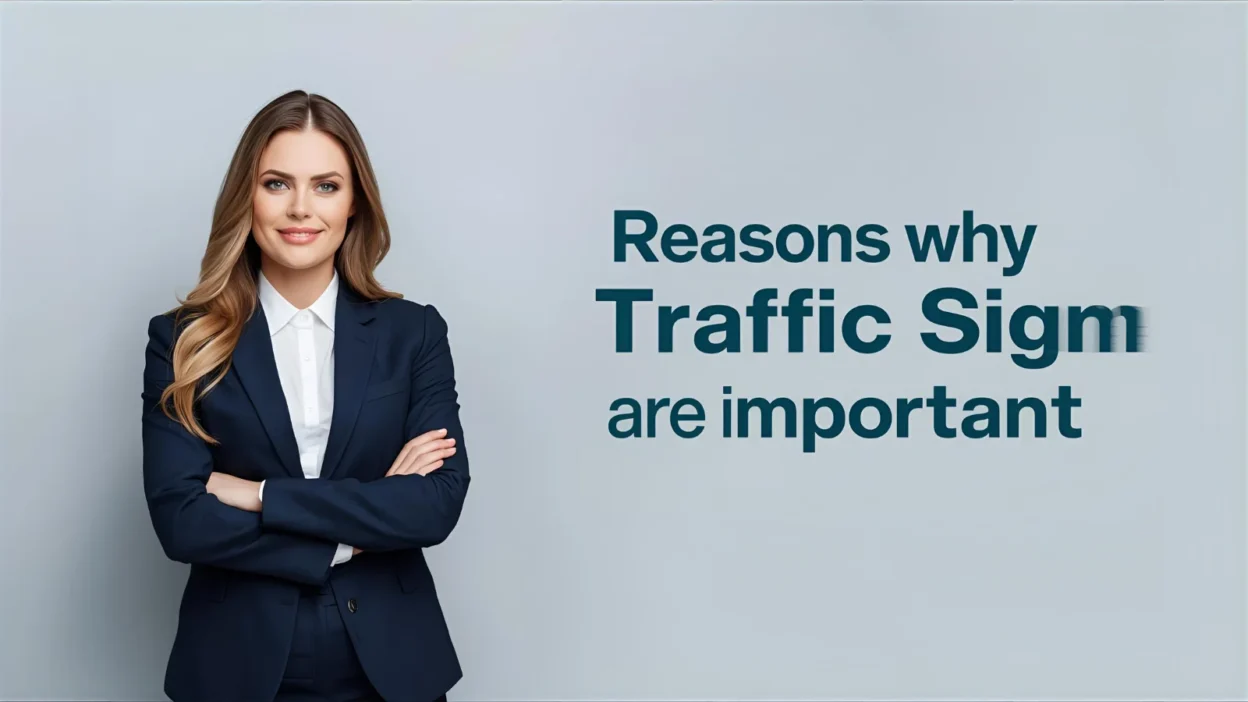Imagine driving on a busy road with no signs—no stop signals, no speed limits, no directions. Chaos would erupt. Traffic signs are the silent guardians of our streets, guiding drivers, cyclists, and pedestrians safely through daily travel.
This article explores the reasons why traffic signs are important, how they ensure safety, order, and smooth transport for all.
Understanding Traffic Signs
📌 Definition:
Traffic signs are official road markers that use symbols, colors, and words to regulate, warn, and guide road users.
👉 They provide universal language for drivers—whether you’re in New York, Tokyo, or Karachi, a red octagon means stop.
Reasons Why Traffic Signs Are Important
- Prevent accidents – by warning drivers of dangers ahead.
- Ensure order – organize traffic flow, especially at intersections.
- Guide directions – help travelers find locations easily.
- Protect pedestrians – crosswalk and school-zone signs safeguard walkers.
- Save time – reduce confusion and traffic jams.
- Support law enforcement – make rules clear and enforceable.
- Promote road sharing – guide cars, bikes, and buses to coexist.
- Educate drivers – instill discipline and responsibility.
Traffic Signs in Daily Life
- Stop sign – prevents collisions at intersections.
- Speed limit sign – controls reckless driving.
- Pedestrian crossing – gives right of way to walkers.
- No parking – keeps streets clear and accessible.
- Hospital zone – alerts drivers to reduce noise and speed.
💡 Example: A “sharp turn ahead” sign warns drivers to slow down, preventing accidents on dangerous curves.
The Psychology of Traffic Signs
Traffic signs tap into visual psychology:
- Colors – red for danger/stop, yellow for caution, green for go.
- Shapes – triangles warn, circles regulate, rectangles guide.
- Symbols – universally understood, even without language.
They reduce decision fatigue by providing clear rules, making driving safer and less stressful.
📖 “Obeying traffic signs isn’t just about rules—it’s about respecting lives.”
Types of Traffic Signs
- Regulatory signs – enforce laws (stop, yield, no entry).
- Warning signs – alert about hazards (slippery road, animal crossing).
- Informational signs – guide travelers (fuel stations, hospitals).
- Construction signs – signal work zones and detours.
- School zone signs – protect children near schools.
Idioms and Expressions Related to Signs
- “Read the signs” – pay attention to warnings.
- “Stop in your tracks” – halt suddenly, like a stop sign.
- “Green light” – approval to move ahead.
- “At a crossroads” – facing a major decision.
- “Danger ahead” – a warning of future trouble.
Synonyms for Traffic Signs
| Synonym | Usage Example |
|---|---|
| Road signs | Road signs keep drivers aware of rules. |
| Street signs | Street signs help identify locations. |
| Highway signs | Highway signs guide long-distance drivers. |
| Regulatory boards | Regulatory boards enforce driving laws. |
| Directional signs | Directional signs show the way to cities. |
Grammar Note: Traffic Signs in Use
- Plural noun – Traffic signs are vital for road safety.
- Singular – A traffic sign warned us of the curve.
- Adjective – Traffic-sign regulations, traffic-sign symbols.
👉 Always use traffic signs when talking generally, and traffic sign for one specific marker.
Real-Life Examples of Traffic Signs’ Impact
- Japan – strict sign usage has led to some of the safest roads in the world.
- Germany’s Autobahn – signs regulate when there’s no speed limit.
- School zones worldwide – child accidents reduced drastically due to warning signs.
- Construction zones – temporary signs prevent accidents where roads are repaired.
Traffic Signs and Society
Traffic signs play a huge role in modern living:
- Save lives – by preventing crashes.
- Reduce stress – clear signs mean smoother journeys.
- Boost economy – efficient transport supports trade.
- Build discipline – remind drivers of civic responsibility.
- Universal rules – connect countries with common sign systems.
🌍 Traffic signs symbolize global cooperation—driving in another country feels safer because of familiar signs.
Challenges in Traffic Sign Usage
- Poorly maintained or hidden signs.
- Illiteracy or lack of driver training.
- Vandalized or stolen signs.
- Overcrowded cities where signs get ignored.
- Differences in sign systems across some countries.
⚡ Solution: Governments should maintain signs, run awareness campaigns, and use smart digital signs for clarity.
The Future of Traffic Signs
Technology is transforming how traffic signs work:
- Smart signs – digital boards updating in real time.
- AI integration – cars detecting and responding to signs automatically.
- Eco-friendly signs – solar-powered road signals.
- Global standardization – unified signs across all countries.
- Augmented reality – signs projected on car windshields.
🚀 Future traffic signs will be more interactive, saving time and improving safety.
FAQs About Traffic Signs
Q1: Why are traffic signs important?
Because they guide, warn, and regulate traffic, ensuring safety.
Q2: How do traffic signs prevent accidents?
By alerting drivers to dangers like curves, crossings, or speed zones.
Q3: Are traffic signs the same everywhere?
Most are standardized, though some countries have unique designs.
Q4: Can drivers be fined for ignoring traffic signs?
Yes—disobeying signs leads to penalties, fines, or license suspension.
Q5: Do pedestrians need to follow traffic signs?
Yes—crosswalk and signal signs protect pedestrians too.
Conclusion
Traffic signs may look simple, but they carry immense power. They save lives, reduce confusion, and keep the world moving smoothly. Without them, roads would be unsafe and chaotic.
The strongest reason traffic signs are important? Because they remind us that every journey matters, and every life on the road deserves safety.



